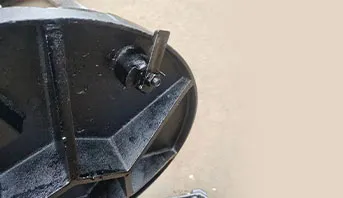framing nails for pressure treated lumber
The Importance of Using Framing Nails for Pressure Treated Lumber
When embarking on any construction project, one of the most critical aspects to consider is the choice of materials and fasteners. Pressure-treated lumber, widely used for outdoor structures like decks, fences, and pergolas, requires special attention when it comes to fastening. Using the right type of framing nails is essential for ensuring the durability and longevity of your project.
Understanding Pressure-Treated Lumber
Pressure-treated lumber is wood that has been infused with chemical preservatives to protect it against rot, decay, and insect damage. This process extends the lifespan of the wood, making it ideal for outdoor applications. However, while pressure-treated lumber has many benefits, it also presents specific challenges when it comes to fastening.
Choosing the Right Framing Nails
When selecting framing nails for pressure-treated lumber, it’s crucial to choose nails that are corrosion-resistant. The chemicals used in pressure treatment can react with standard steel fasteners, leading to premature rust and failure. For this reason, galvanized or stainless steel framing nails are recommended. These materials are specifically designed to withstand exposure to moisture and corrosive environments, ensuring a strong, durable bond.
Galvanized nails are coated with a layer of zinc, which provides a barrier against corrosion. There are two main types of galvanized nails hot-dipped and electroplated. Hot-dipped nails are more robust and ideal for outdoor projects, while electroplated nails are suitable for indoor applications. On the other hand, stainless steel nails offer superior corrosion resistance and can be used in the most demanding environments, such as coastal areas with high humidity and salt exposure.
Nail Size and Length
framing nails for pressure treated lumber

In addition to material, size and length are also crucial considerations when choosing framing nails. The diameter of the nails should be appropriate for the thickness of the lumber being fastened. For standard 2x lumber, 8d (2.5 inches) or 10d (3 inches) nails are typically used. However, if you are working with thicker lumber or require more holding power, you might consider using larger nails.
Proper spacing is also vital. Following the recommended spacing guidelines helps ensure that the structure can bear loads effectively without warping or twisting. For framing applications, nails should generally be spaced 16 to 24 inches apart, depending on the project's specifications.
Installation Techniques
Proper installation techniques are just as important as the right nails. When nailing pressure-treated lumber, it’s essential to avoid issues such as splitting or cracking. This can be mitigated by pre-drilling pilot holes, especially in hardwoods or when using thicker nails. A good practice is to offset the nails on opposite sides of joints, distributing stress and enhancing stability.
Additionally, consider using a pneumatic nail gun for efficiency and precision. Ratchet-style nail guns can help drive nails consistently and with minimal effort, making the installation process faster and reducing the chance of mishaps.
Conclusion
In conclusion, using the right framing nails for pressure-treated lumber is essential for the success of any outdoor construction project. By choosing the proper materials, sizes, and installation techniques, builders can ensure that their structures resist the elements and stand the test of time. As outdoor living spaces continue to gain popularity, understanding the nuances of working with pressure-treated lumber and its fasteners will be imperative for both DIY enthusiasts and professional contractors alike. Investing time in this important aspect of construction will ultimately lead to safer, more durable, and aesthetically pleasing outdoor structures.
-
Space-Saving Chain Fence Hacks Vertical Gardening with Cyclone MeshNewsJul.16,2025
-
Innovations in Iron Nail Wire Production for Modern ConstructionNewsJul.16,2025
-
Creative Uses of Wire Netting Fence in Modern Landscape DesignNewsJul.16,2025
-
Barbed Wire Fence Innovations in Anti-Climb TechnologyNewsJul.16,2025
-
Architectural Uses of Umbrella Nails for Aesthetic Roof DesignsNewsJul.16,2025
-
Architectural Uses of Razor Barbed Wire in Secure Urban DesignNewsJul.16,2025




